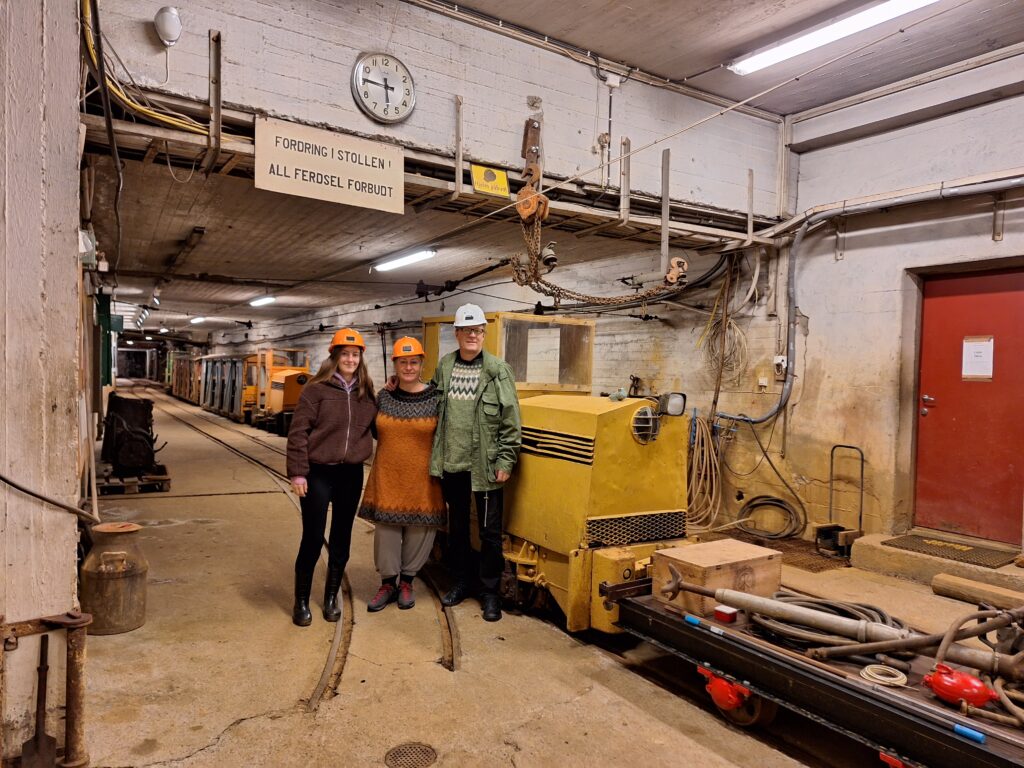
In Sulitjelma (nickname Sulis), human activity has been traced 1,000 years back in time, but then we are talking about nomadic Sami people. Permanent settlement began with the Norwegian Anders Larsen in 1848. The name Sulitjelma comes from Pitesami language, but is not explained with absolute certainty. Suggestions for translations are ‘The Eyes’ Threshold‘ or ‘The Sun’s Eye‘.

In 1858, the Sami Mons Petter found a stone that he thought was gold. Disappointingly, he did not become rich, as it turned out that he had found pyrite. However, the industrialist Nils Persson realized what it was, and that this could be useful in his factory at Hälsingborg, Sweden. He started test mining operations at Langvatnet southwest of Fauske, in 1887. This became an industrial adventure that was to last for over 100 years.

Sulitjelma Aktiebolag was founded on 10/2-1891. The population in Sulis increased dramatically from 50 around 1880 to 2,750 in 1910 (today less than 400 people). A total of 18 mines were opened in the area, and Sulitjelma Aktiebolag was for many years Norway’s second largest employer. With the mines came the need for cable cars, a laundry, an ore crusher, a power station, a wharf and eventually also a railway. The transport was demanding and expensive, with several reloadings along the way, to and from rail and boat.

The Sulitjelma mining industry closed in 1991. During 100 years of operation, 6 million tons of metal and sulfur were produced. Most of it was sulfur. The rest were: 470,000 tons of copper, 215 tons of zinc, 282 tons of silver, and 3.7 tons of gold. The visitor mine is located at +59 m (above Langvatnet). The mine shafts (which are now mostly filled with water) go all the way down to -396 m (ie approx. 250 m below sea level). The length of the shafts corresponds to a journey of 1240 km (Sulitjelma – Drammen).

After a mine visit and the corresponding mining museum, a bath must be just right, we thought. However, after several testimonies from the locals, the conclusion was that ‘You don’t swim in Sulitjelma, it’s polluted here!‘ Too bad, we thought. Or? Maybe we could have a bath anyway? It felt really, really disappointing not to bathe, as tobatheornottobathe see it.

What if we did the bathing thing with our mouths closed? If the problem is heavy metals, then surely they won’t jump into our bodies during a short bath? And we thought this waterfall in the Giken River was so extreme in its colours, that we just had to bathe it.

Most of the pollution in the Sulitjelma waterways comes from the Giken River. After the mine was closed (1991 to 2013), NIVA has estimated the amount of heavy metals coming out of Lake Langvatnet to approximately 25 tons of copper, 30 tons of zinc, 80 kg of cadmium and 4,500 tons of sulphate – each year. Today, the pollution mostly comes from runoff from the mines. Attempts have been made to stop this by filling the mine tunnels with water. The fish in Langvatnet, though, actually do not contain heavy metals above the recommended values, but the people in Sulis still do not want to eat it (or to swim in the water).
Swimming in the Giken River is basically not something we recommend, even if the colors are spectacular.